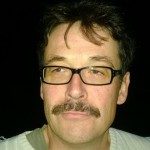Link to Pubmed [PMID] – 36191046
Link to DOI – 10.1371/journal.pntd.0010367
PLoS Negl Trop Dis 2022 Oct; 16(10): e0010367
Understanding the underlying risk of infection by dengue virus from surveillance systems is complicated due to the complex nature of the disease. In particular, the probability of becoming severely sick is driven by serotype-specific infection histories as well as age; however, this has rarely been quantified. Island communities that have periodic outbreaks dominated by single serotypes provide an opportunity to disentangle the competing role of serotype, age and changes in surveillance systems in characterising disease risk.We develop mathematical models to analyse 35 years of dengue surveillance (1979-2014) and seroprevalence studies from French Polynesia. We estimate the annual force of infection, serotype-specific reporting probabilities and changes in surveillance capabilities using the annual age and serotype-specific distribution of dengue.Eight dengue epidemics occurred between 1979 and 2014, with reporting probabilities for DENV-1 primary infections increasing from 3% to 5%. The reporting probability for DENV-1 secondary infections was 3.6 times that for primary infections. We also observed heterogeneity in reporting probabilities by serotype, with DENV-3 having the highest probability of being detected. Reporting probabilities declined with age after 14 y.o. Between 1979 and 2014, the proportion never infected declined from 70% to 23% while the proportion infected at least twice increased from 4.5% to 45%. By 2014, almost half of the population had acquired heterotypic immunity. The probability of an epidemic increased sharply with the estimated fraction of susceptibles among children.By analysing 35 years of dengue data in French Polynesia, we characterised key factors affecting the dissemination profile and reporting of dengue cases in an epidemiological context simplified by mono-serotypic circulation. Our analysis provides key estimates that can inform the study of dengue in more complex settings where the co-circulation of multiple serotypes can greatly complicate inference.

